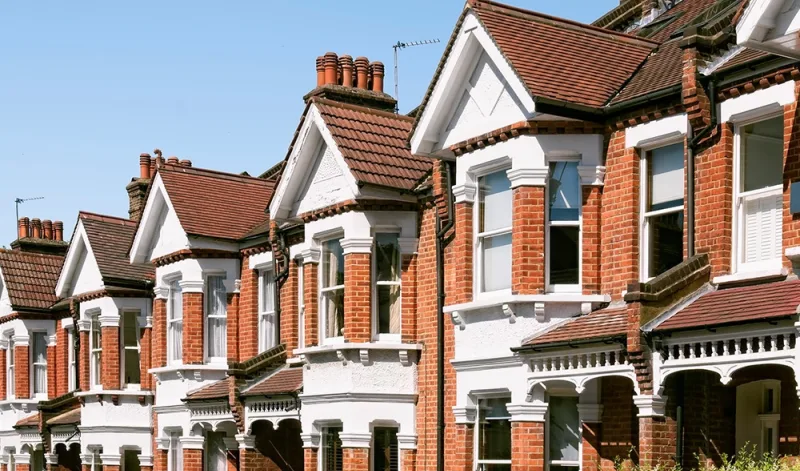Why do we need more flats?
We can trace the need to convert houses (including other buildings, not originally designed to be used as domestic dwelling homes) in to flats, back at least 150 years and possibly even further back to the time of the industrial revolution, which occurred in Great Britain during the late eighteenth and early nineteenth century. This period in UK history, saw the beginning of significant alterations in the landscape of the country and was marked by a series of complex and often radical socio-economic changes never experienced before.
Until this time, little had changed in Britain for hundreds of years, the country was based on an Agrarian economy, with people very much living and working in rural areas, the vast majority had little or no contact or interaction with other towns or villages. Outside of the homes owned by the landowners & gentry, the houses were in the main, constructed of locally sourced materials and constructed using building techniques that are only available to today from a handful of craftsmen. These houses were not designed or crafted to withstand the test of time and yet, it is a testament to the builders art that many have survived to this day and age, thanks also of course to government legislation and the love and care of the owners. The dawn of the industrial revolution brought with it the gradual movement of people from the rural areas, in to the towns and cities, looking for work and affordable housing. At this time, much property was owned by private landlords, who often erected property with little consideration for the occupants living conditions and in a regulation free environment. Houses were constructed cheaply and quickly, sanitation was poor and although some property could be described as being a ‘multi occupant dwelling’, there was little or no partitioning and families lived pretty much on top of each other.
Towards the end of the first world war, attention started to focus on accommodation and the needs of a people torn apart by war and hardship. The general consensus of opinion was that much property in the towns and cities was of a very substandard quality, much could be described as slum dwelling and that a program of rebuilding was required to improve living conditions, improve sanitation and thus improve health. Although a good deal of work was carried out in the inter war years, it wasn’t until after the second world, when the fledgling national health service helped to act as a catalyst for improvements in housing.
A focus was applied to housing at this time, new thinking and new designs were applied and the humble tower block came in to existence for a nation looking forward to a brighter and better future. Substantial amounts of slum property was cleared, often as a result of bomb damage whilst much work was done bringing about listed building status for certain times of property, to ensure that it was preserved for future generations. The new born welfare state set about providing homes fit for Britons to live in. Although much of the new build property was purpose built, it was recognised that a a good deal of the existing housing stock could be modified and up graded to provide decent quality homes.
In the 1950s, modernist post-war thinking turned it’s attention for the first time to actually deliberating what type of home was required for what type of person. This type of ‘need and fit’, tried to match the household to a particular type of property and is probably more relevant today than it was then. The government, with it’s all inclusive policy wanted to ensure that single people and the elderly would be equally catered for as well as households with children. Work was done to establish the number of ‘Silent or hidden’ households, these included children living with their parents, relatives or lodgers, it was considered that all of these would prefer to have their own home if they were given the opportunity
This was a grand plan, but the main problem was a chronic shortage of houses and a desire not to construct houses as they had been done in the past. What followed was unprecedented levels of municipal building and the rise of the now infamous tower block. This much maligned post-war dream helped to fuel the desire to convert existing property in to flats as many considered the more traditional style of property to be more desirable and of a better quality with less’ social problems” The problems with the older style properties, could be addressed by programs of maintenance and repair and once tidied up and converted, provided a more atheistically pleasing home.
Although in recent years much has changed with the design and build of blocks of flats, these post war teething problems did help precipitate a rush to convert houses in to self contained flats. We approach modern times with again many upheavals and a nation that are not content with being renters, they want to be home owners, they want security of tenure and the a good quality property.
As with the industrial Revolution, we are now experience many socio-economic changes which are increasing the need for more housing and more housing on a ‘need and fit’ basis. Currently, the desire to convert houses in to flats, is being fuelled by many factors including.
- Chronic housing shortages, with the need to build more homes. Ironically much property remains empty because of the over inflated prices being requested by sellers and building constructors.
- It is anticipated there will be a huge population growth in the next fifteen years, up to an extra 5 million people are expected to be living in the United kingdom. These include economic migrants, refugees & asylum seekers and the current aging population, living longer as a result of advances in medicine.
- Shortage of land available for new build homes, means that property will have to become smaller, more compact and utilise modification to existing structures.
- Economic downturn will mean than levels of lending to fund purchase property will become more’realistic” and thus the amount of money offered will become lower, this will result in an increase desire for smaller realistically priced property.
- Working patterns are changing,again on levels not seen since the industrial revolution, work is often contracted out with individuals acting as independent contractors having to travel to different places of work, often requiring to rent property for several months at a time. Many others are have to consider accepting posts away from their main residents as work becomes more scarce.
- Being single or divorced no longer carries the same social stigma and there are now more one person households than ever before, also people are living longer, elderly people tend to favour smaller more manageable properties.
- More property is being required by students as often, campus accommodation struggles to meet demands. Rented flats fit the bill for this need.
- Changes in social aspiration have meant that more persons want to be homeowners than renters, however because of current fluctuations in the housing marketing, renting, in particularly, more compact property such as flats is been seen as a viable proposition until such time as the markets stabilised.
These are just some of the factors that are contributing to the need to convert more of the existing housing stock in to small flats. Larger homes are often seen as a waste of resources and converting a home in to flats is often seen as a viable option for owners who want to stay put but perhaps not have such a large property. The process of converting an existing structure, is a relatively simple one but, If you are considering converting this, always seek professional advise as to the exact process required to comply with all current legislation.




























